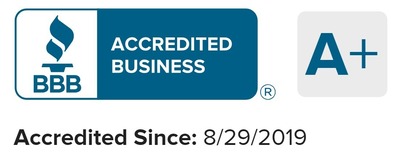A month-to-month lease is a popular rental contract for both landlords and tenants. This is flexible leasing, having no set end date. Instead, the lease is renewed automatically each month as long as both parties agree.
According to the U.S. Bureau of Labor Statistics (BLS), in 2022, 31.8 percent of leases were month-to-month.
In this article, we will discuss the pros and cons of a month-to-month lease agreement from both the tenant’s and landlord’s perspectives.
By the end, you’ll have a thorough understanding of how month-to-month leases work and what they mean for you as either a renter or landlord.
What is a Month-to-Month Lease?
A month-to-month lease is an auto-renewing rental agreement that continues on a monthly basis until either the tenant or landlord decides to end the arrangement with appropriate notice. It is also known as a “tenancy at will” or a “periodic tenancy,” a short-term rental agreement that operates on a rolling basis, fulfilling the occupancy without a definite expiration date. Both parties have the right to end the deal without a penalty for any reason as long as advance notice is provided. The timing of notification to terminate a month-to-month lease varies depending on the state and the lease terms. Generally, the required notice period is 30 to 60 days.
Month-to-month agreements are commonly used for:
- Tenants who want the flexibility to move on short notice.
- Landlords who don’t want to commit to long-term leases.
- As a probationary period before signing a long-term lease.
- Subletting arrangements between roommates or tenants.
- Vacation rentals and other short-term stays.
Also Read: What is a Mid-Term Rental?
How Does a Month-To-Month Lease Agreement Work?
A monthly tenancy is a short-term lease that only lasts for 30 days and has auto-renewal until one party gives proper notice for non-renewal before 30 days.
A monthly tenancy usually works as follows:
- The landlord and tenant need to sign a rental agreement on a rolling basis without a definite expiration date until one of the parties decides to terminate the tenancy with proper notice.
- The tenancy starts from the day both parties sign the rental agreement.
- A monthly tenancy also applies to those whose long-term lease expires but continue staying and paying the rent monthly to the landlord without a written contract.
- To terminate the monthly tenancy both parties must adhere to the lease terms and state laws.
- Either of the parties who wants to terminate the contract must provide the proper notice before 30-60 days.
How Does It Differ from Fixed-Term Leases?
The main difference between month-to-month leases and standard fixed-term leases is the length of the rental period. Fixed-term leases run for a pre-determined length of time, usually 6 months or a year. At the end of the term, tenants must either renew the lease or move out. Month-to-month leases do not have a set end date. As long as neither party provides proper termination notice, the lease will automatically renew each month.
Some other key differences include:
Flexibility: Month-to-month leases allow either party to terminate the agreement with proper notice, making them more flexible than long-term lease agreements.
Rent Changes: Landlords can increase the rent of their rental property with proper notice on a month-to-month agreement but not on a fixed-term lease during the period.
Security: Fixed-term leases provide more security for landlords and tenants who know precisely when the agreement will end. Month-to-month does not guarantee occupancy for a certain period.
Rental History: Month-to-month leases may look less attractive on a rental application than longtime occupancy under a standard 1-year lease.
Pros and Cons of Month-to-Month Leases: Is It Right Choice for You?
Before committing to this rental agreement, tenants and landlords must carefully consider the pros and cons of a lease that fits their needs.

Benefits of Month-to-Month Tenancy
Flexibility: The main advantage of a month-to-month lease is the flexibility offered to landlords and tenants. This flexibility can allow landlords to adjust rental income based on market conditions more frequently than with fixed-term leases. Tenants have the full freedom to move on if they find a better alternative, and landlords can quickly end the periodic tenancy if they wish to sell their property or make any other changes. This rental agreement does not have a set end date.
Short Notice Period: Most month-to-month leases require a short notice period for tenants and landlords. Depending on local laws, any party can terminate the agreement by providing written notice of 30 days in advance or even less. This provides convenience and allows for more fluid transitions. For example, if a tenant wishes to move out by December 1st, they must inform the landlord in writing by November 1st.
Renews Automatically: Unless one of the parties gives advance notice to vacate the property, the periodic tenancy agreement renews automatically at the end of each month. This allows the arrangement to continue indefinitely without needing to sign a new contract and also provides peace of mind unless the landlord or tenant wishes to change the lease terms.
No Long-term Commitment: This agreement has no long-term responsibility for landlords and tenants. It makes it easier for those tenants unsure about their stay in the property. They can move out anytime without a penalty for breaking the lease, and landlords can terminate the monthly lease to free up the space for personal use or to sell the property.
Limited Risk: As month-to-month leases reduce the risk of being tied to long-term commitments, landlords and tenants can end the rental agreement with proper notice. This minimizes the potential financial and legal obligations, providing both parties peace of mind and a sense of security.
Adapting to Market Fluctuations: In volatile rental markets, tenants may prefer month-to-month leases to avoid being locked into a contract as rent prices fluctuate, while landlords benefit from the ability to adjust rental rates more frequently to align with current conditions, maximizing their potential income.
Testing Compatibility: Tenants and landlords can test their compatibility before committing to a long-term agreement. This trial period allows both parties to assess the property’s suitability and the landlord-tenant relationship. If any issues arise, either party may not wish to renew the lease without getting locked into a long-term commitment.
Drawbacks of Month-to-Month Tenancy
Potential Rent Fluctuations: One of the greatest potential drawbacks of this lease is the possibility of rent fluctuations. Landlords can increase the rental rates each month, responding much faster to market changes, which means tenants will face a higher financial burden. If the tenant chooses not to sign the new agreement, they will have to end the monthly tenancy themselves, and landlords must struggle to find new tenants.
Lack of Stability: Renting month-by-month do not offer the same stability as fixed-term leases. Both landlords and tenants can terminate the lease at any time with a short notice period. This transient nature can make it challenging for landlords to implement a consistent tenant screening process, potentially leading to higher turnover rates. As a result, landlords may struggle to secure quality long-term tenants who pay rent on time and maintain the property, while tenants may miss out on the benefits of a stable rental experience.
Uncertain Tenancy: There is always a risk of terminating the lease agreement with a shorter notice at any time. This brings a complication for those who prefer long-term stability. On the one hand, landlords have to face frequent wear and tear on the property, and on the other hand, the tenant’s rental history gets negatively impacted.
Legal Requirements for Ending a Monthly Lease Agreement

The legal requirements to end a month-to-month lease vary depending on the state and locals. It’s essential to understand the local housing legislation, as it may dictate specific notice periods and procedures for terminating month-to-month leases. Therefore, seeking legal advice is advisable to ensure it complies with the legal requirements. Here are some legal considerations that apply in many jurisdictions:
Written Notice: Both parties should hand-deliver or mail a written notice to terminate the lease agreement by mentioning the clear intention, including the date the tenancy period will end.
Notice Period: Generally, 30 days are required in most states for month-to-month lease termination. But states such as North Carolina only require 7 days’ notice, and 60 days in Delaware. You need to follow your state laws to avoid any delays in termination. If you’re unsure about the requirements in your area, consulting a local tenant’s rights organization or lawyer is always recommended.
Timing of Notice: While notice can be given at any time during the month, it should be given plenty of time for the other party to receive it and effectively terminated at the end of the notice period.
Delivery of Notice: As written notice is important to end a lease, it should be delivered via certified mail, hand-delivered, or emailed, depending on the requirements mentioned in the lease agreement or state law.
Conclusion on Monthly Rental Lease Agreement
A month-to-month rental agreement offers cost-effective flexibility to both tenants and landlords who are not ready to commit to long-term fixed-term contracts. While they bring flexibility, proper notice requirements, and other regulations still protect rights on both sides equally. Approaching these leases respectfully and legally sets all parties up for a smooth month-to-month rental experience. Let Property Management OKC help you in case of any trouble related to leasing!
FAQs About Month-to-Month Leases
Here are answers to the most common questions asked about month-to-month rentals:
Can rent be increased during the monthly period?
No, rent amounts can only be increased with 30 days advance written notice before the start of the next rental period. Rent increases cannot be applied mid-month.
What happens if notice is not given on time?
If proper 30-day notice is not provided, the lease automatically renews for another month at the same terms. In other words, late notice means the agreement continues.
Can a tenant break the lease early?
Technically yes, but tenants are still responsible for rent and will forfeit their full deposit. Providing proper 30-day notice is considered breaking the lease early since there is no fixed end date.
How long does a month-to-month lease last?
A month-to-month lease continues indefinitely until the tenant or landlord terminates the agreement with proper notice.
Does month-to-month lease work in every apartment?
Generally, in most cases, it worked but not every apartment is open for a month-to-month lease. Some landlords seek a steady income that is only achievable with a long-term lease.
How much more to charge for month-to-month lease?
Usually, it depends on the landlords and the market rates but as a landlord, you can charge more than 20% of the monthly rent. In some cases, landlords also charge more than 50% of the monthly rent if they are staying less than 3 months. Get to know about how much you should charge for rent.
How do month-to-month leases affect rental unit pricing?
Month-to-month leases can impact rental unit pricing by allowing landlords to adjust rents more frequently in response to market conditions, often resulting in higher base rates; typically 20% or more above standard rents. This flexibility can attract tenants but also increases the risk of vacancy, prompting landlords to price competitively. Ultimately, while these leases offer adaptability, they may lead to more variable and often elevated rental prices.
Do lease provisions carry over to month to month?
Yes, lease provisions usually carry over to month-to-month agreements. Most original terms remain in effect, including notice requirements (30 to 60 days) and rent amounts, which can be increased with proper notice. Tenants must still follow the rules regarding property maintenance. Always check local laws for specifics.

Author
Scott Nachatilo is an investor, property manager and owner of OKC Home Realty Services – one of the best property management companies in Oklahoma City. His mission is to help landlords and real estate investors to manage their property in Oklahoma.
 (
(









